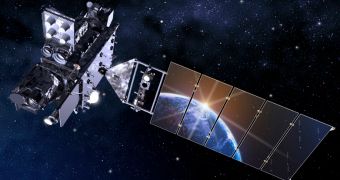Officials at the American space agency announce that another one of the primary science instruments that will fly to space aboard the Geostationary Operational Environmental Satellite – R (GOES-R) satellite has just been completed, and that it is now ready to be integrated with the spacecraft bus.
GOES-R is being built by NASA for the US National Oceanic and Atmospheric Administration (NOAA), as part of the latter's effort to improve its decaying GOES constellation of satellites.
These spacecraft have been orbiting our planet ever since the launch of the Synchronous Meteorological Satellite-1 (SMS-1), back in 1974. At this point, only four satellites are available for scientific measurements in this constellation, GOES 12 through 15.
The purpose of this system is to provide extremely accurate data for weather prediction and analysis. In addition to conducting advanced meteorological investigations, the spacecraft are also uniquely suited to track the development and progress of massive tropical storms, hurricanes, typhoons and so on.
GOES-R represents the first of a new generation of geosynchronous environmental satellites, and will be used to test the instruments to be installed on the next iteration of this renowned constellation. With the launch of spacecraft designated R, S, T, and U, NOAA will extend GOES through 2036.
The new satellite recently received its Space Environment In-Situ Suite (SEISS) instrument, which was developed and built by Carlisle, Massachusetts-based Assurance Technology Corporation (ATC). The instrument will eventually make its way to Littleton, Colorado, by early 2014, where engineers at Lockheed Martin Space Systems will integrate it with GOES-R.
The purpose of SEISS is to accurately monitor radiation sources and hazards around Earth that may pose a threat to both spacecraft and astronauts in orbit. The suite will also be able to conduct a series of studies on space weather, which is to say on how Earth interacts with radiation released by the Sun.
“This is an exciting time for GOES-R, as the instruments are meeting the milestones that put them on the path to integration with the spacecraft. SEISS is a critical instrument to ensure radiation hazards that impact satellites, radio communications and navigation systems are monitored,” says Greg Mandt.
The expert, who is the director of the GOES-R System Program, holds an appointment with the NASA Goddard Space Flight Center (GSFC) in Greenbelt, Maryland, which manages the GOES-R project.

 14 DAY TRIAL //
14 DAY TRIAL //